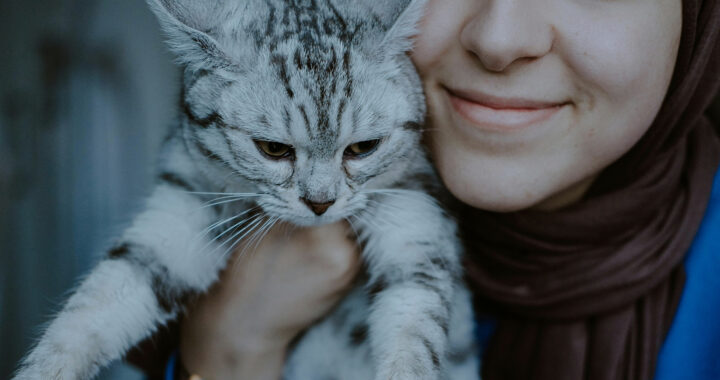For centuries, the domestic cat has been regarded as mysterious, aloof, and somewhat inscrutable compared to its canine counterpart. Humans often wondered whether a reliable approach to communicating with cats existed. A team of researchers has now revealed that communication may be as simple as a slow and deliberate blink.
The Role of Slow Blinking in Establishing Affiliative Bonds Between Humans and Domestic Cats
Background
Feline communication has long intrigued both pet owners and scientists. Specifically, unlike dogs, cats rarely display overt signals of affection that humans immediately understand. Observing their subtle expressions requires patience and attentiveness. This led researchers to investigate whether eye behavior could serve as a consistent bridge between species.
The study, published in 2020 in Scientific Reports, investigated whether cats interpret human facial expressions in ways similar to how they respond to other cats. Eye-narrowing, half-closed eyes, and slow blinks are common feline signals of relaxation and trust. Scientists aimed to test whether humans could replicate this signal successfully.
Researchers designed two experiments to measure feline reactions. In the first, cat owners performed slow blinks toward their relaxed pets, while researchers recorded responses. In the second, strangers interacted with unfamiliar cats using the same blinking gesture, extending a hand afterward. The reactions were carefully analyzed for patterns and differences.
Key Findings
The results revealed remarkable consistency. Cats were more likely to return slow blinks when their owners initiated them, compared with a no-interaction baseline. Furthermore, when approached by strangers performing the gesture, cats not only blinked back but also demonstrated a greater willingness to approach an extended hand than during neutral expressions.
Researchers defined the gesture precisely. A slow blink sequence included half-blinks followed by either prolonged narrowing of the eyes or a brief closure. This subtle communication was distinct from defensive staring or rapid flicks. Parallels were drawn with positive human facial signals, particularly the Duchenne smile, which conveys relaxation and friendliness.
Interpretations of the findings suggest two complementary explanations. First, cats may naturally perceive slow blinks as a non-threatening signal, contrasting with prolonged staring that typically signals aggression. Second, through years of cohabitation, cats may have learned that humans respond positively to this gentle and relaxed expression of trust.
The implications extend beyond ordinary pet interactions. In animal shelters, cats that display relaxed, half-closed eyes during human interactions are often adopted more quickly. Therefore, teaching shelter staff and potential adopters the use of slow blinks may help improve feline welfare, adoption rates, and human–animal rapport in stressful environments.
Reminders
However, the researchers noted the limitations. Their study was based on modest sample sizes in domestic settings, meaning results cannot automatically be generalized across all breeds, feral populations, or very young kittens. Questions also remain regarding whether slow blinking is an evolved feline signal or primarily a learned behavior from human reinforcement.
The practical application of the communication technique is simple and safe. Humans are advised to maintain a comfortable distance from the cats, soften their facial expression, and slowly narrow their eyes before briefly closing them. Waiting calmly afterward allows the cat to reciprocate voluntarily, reducing the chance of miscommunication or intimidation.
Animal experts note combining the slow blink with broader awareness of feline body language. Cats displaying flattened ears, lashing tails, or dilated pupils may signal stress or defensiveness, regardless of blinking. Respecting those cues is vital, since forcing interaction may damage trust. Communication with cats always requires patience and attentive observation.
FURTHER READING AND REFERENCE
- Humphrey, T., Proops, L., Forman, J., Spooner, R., and McComb, K. 2020. “The Role of Cat Eye Narrowing Movements in Cat-Human Communication.” Scientific Reports. 10(1). DOI: 1038/s41598-020-73426-0
